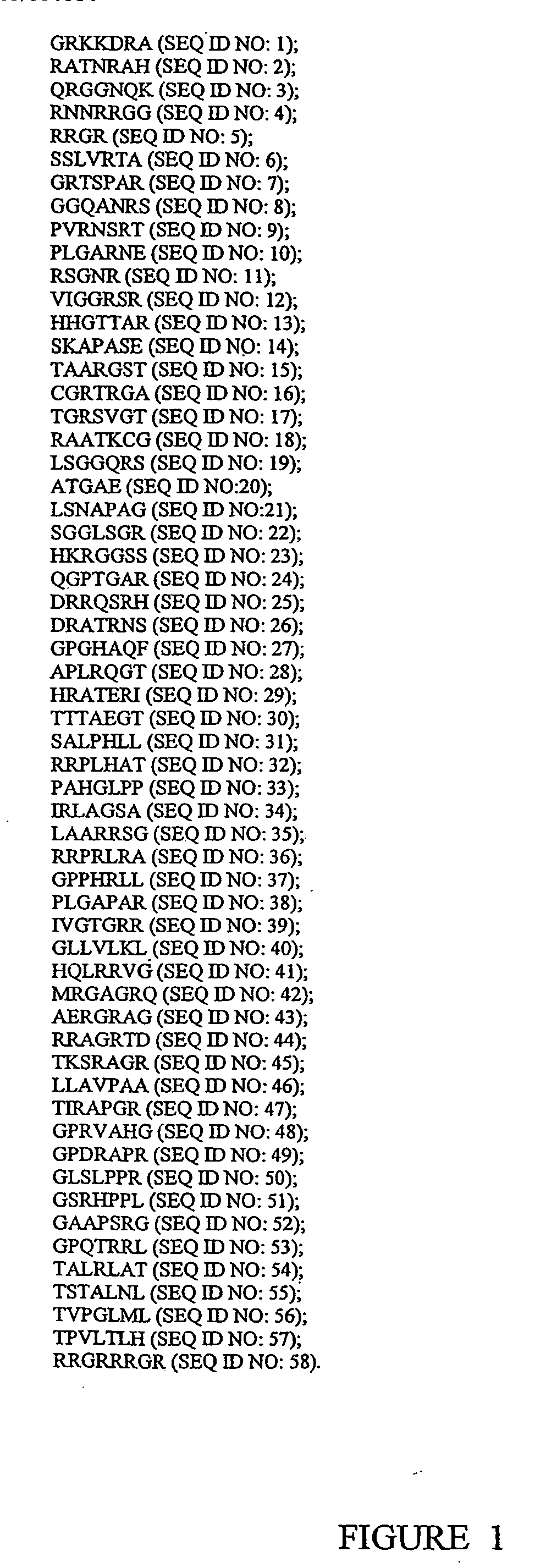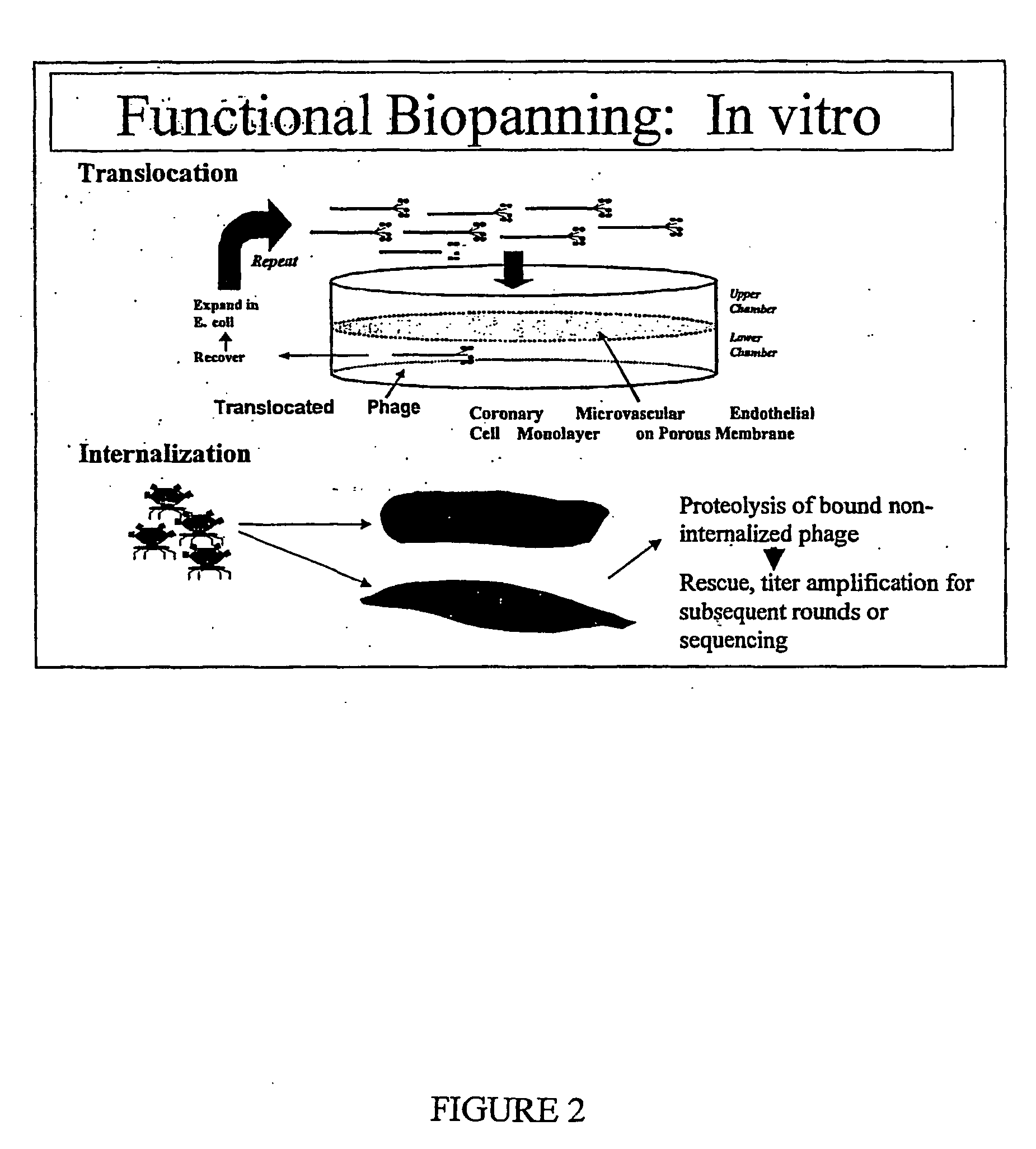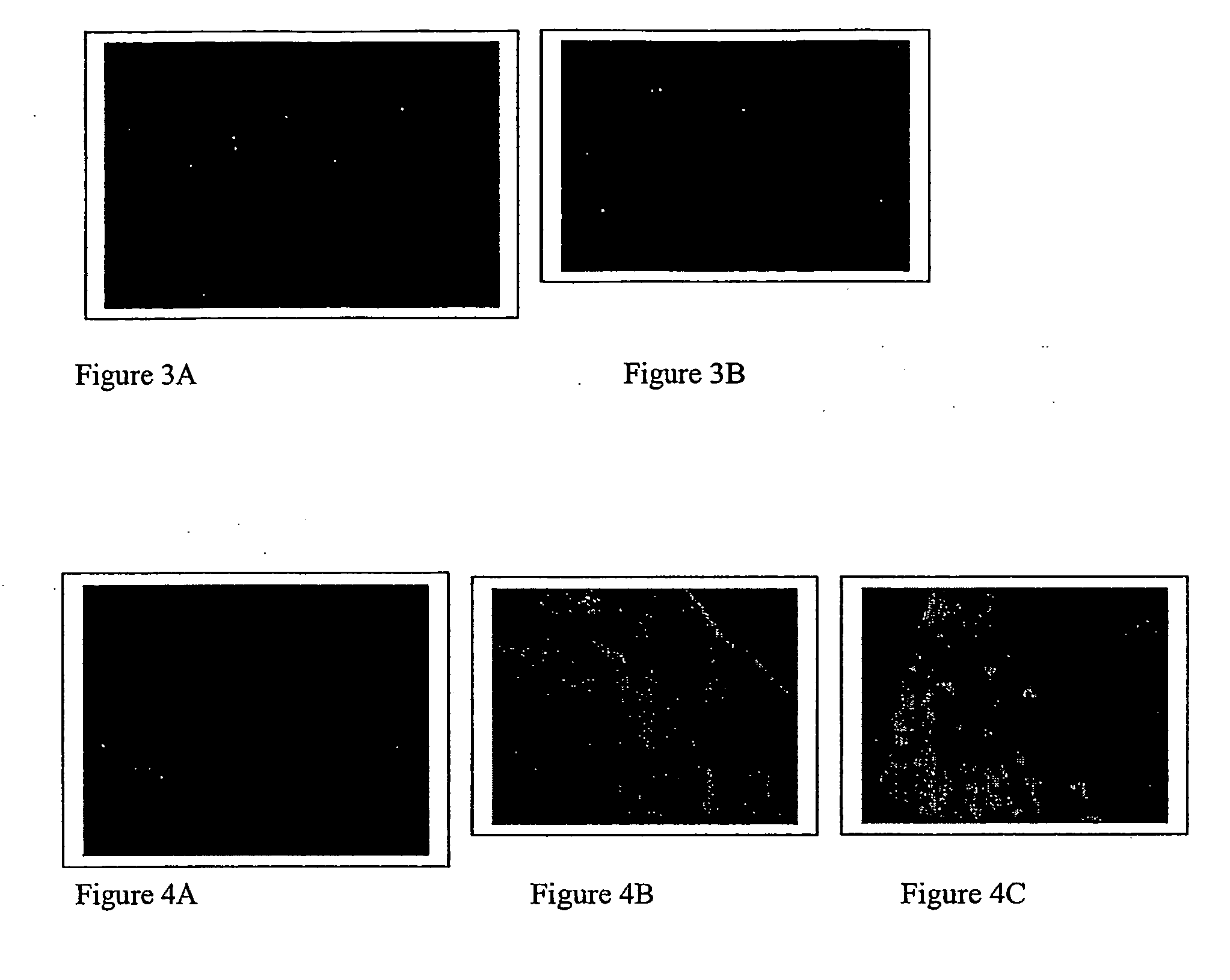Transport peptides and uses therefor
a technology of transport peptides and peptides, which is applied in the direction of peptides, peptide/protein ingredients, immunoglobulins, etc., can solve the problems of delivery, successful gene therapy approach defined for either disease, and the problem of peptide delivery into a cell remains problemati
- Summary
- Abstract
- Description
- Claims
- Application Information
AI Technical Summary
Benefits of technology
Problems solved by technology
Method used
Image
Examples
example 1
Identification of Transport Peptides
[0065] Specific peptides were developed that can cross endothelial barriers and cross cell membrane barriers to allow delivery of genes and protein fusion constructs to targeted cells, in vivo and in vitro. These peptides were developed by a variety of methods and approaches. One such approach is the use of peptides phage display. Peptide phage display libraries were constructed consisting of T-7 bacteriophage that express random peptide sequences on their capsid. The libraries contain 108-109 unique peptide sequences, expressed as fusion constructs on a capsid protein. The libraries express random peptides 7-12 amino acids in length as fusions to the bacteriophage capsid.
[0066] These libraries were used to perform functional biopanning experiments in which the internalization of the bacteriophage or the ability of the bacteriophage to cross endothelial barriers was used to select phage expressing unique peptides that directed these functional c...
example 2
In Vitro Assessment of the Properties of Transport Peptides
[0069] To test the properties of the peptides defined, small scale synthesis of these peptides was ordered, labeled with rhodamine for fluorescent localization, from the Keck facility at Yale University. They were then used in in vitro and in vivo experiments to investigate the ability of these peptides to enter cells and tissues. The ability of these transport peptides to enter cells in culture was tested, and 100% transduction efficiency to these cultured cells was demonstrated.
[0070]FIGS. 3A and 3B show pictures depicting highly efficient internalization of these peptides into cells in culture. One such transport peptide is RRGRRRGR. The pictures in FIGS. 3A and 3B demonstrate efficient uptake of an internalization peptide into endothelial cells (HUVEC cells)(FIG. 3A) and smooth muscle cells (FIG. 3B). Internalization of these peptides was demonstrated in rat aortic and adult human smooth muscle cells. Random peptides l...
example 3
In Vivo Assessment of the Properties of Transport Peptides
[0071] In experiments designed to test the ability of these peptides to cross the endothelium and enter cells in vivo, synthetic transport peptides labeled with the fluorescent marker rhodamine were infused into the coronary circulation of mice. To demonstrate the ability of these peptides to translocate into the heart after coronary infusion we infused the labeled peptides into the coronary circulation of mouse hearts. Peptides selected for internalization were capable of internalizing into the myocardium efficiently. The peptides exited the coronary circulation and entered the cardiac muscle with extreme efficiency that was not demonstrated with a control peptide of the same length (see FIGS. 4A-C).
[0072] The picture in FIG. 4A depicts virtually no uptake of a random (non-selected) peptide labeled with rhodamine. The pictures in FIGS. 4B and 4C depict efficient uptake of transport peptides (selected from the in vitro biop...
PUM
| Property | Measurement | Unit |
|---|---|---|
| nucleic acid | aaaaa | aaaaa |
| pharmaceutical composition | aaaaa | aaaaa |
| Permeability | aaaaa | aaaaa |
Abstract
Description
Claims
Application Information
 Login to View More
Login to View More - R&D
- Intellectual Property
- Life Sciences
- Materials
- Tech Scout
- Unparalleled Data Quality
- Higher Quality Content
- 60% Fewer Hallucinations
Browse by: Latest US Patents, China's latest patents, Technical Efficacy Thesaurus, Application Domain, Technology Topic, Popular Technical Reports.
© 2025 PatSnap. All rights reserved.Legal|Privacy policy|Modern Slavery Act Transparency Statement|Sitemap|About US| Contact US: help@patsnap.com



